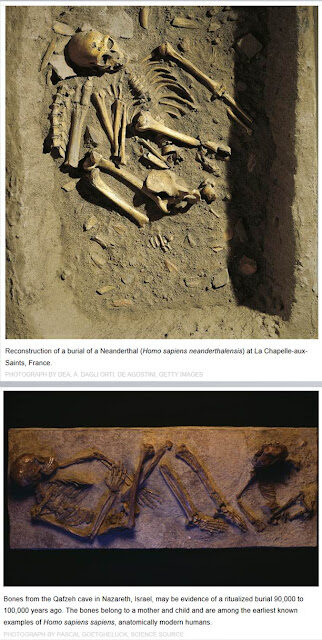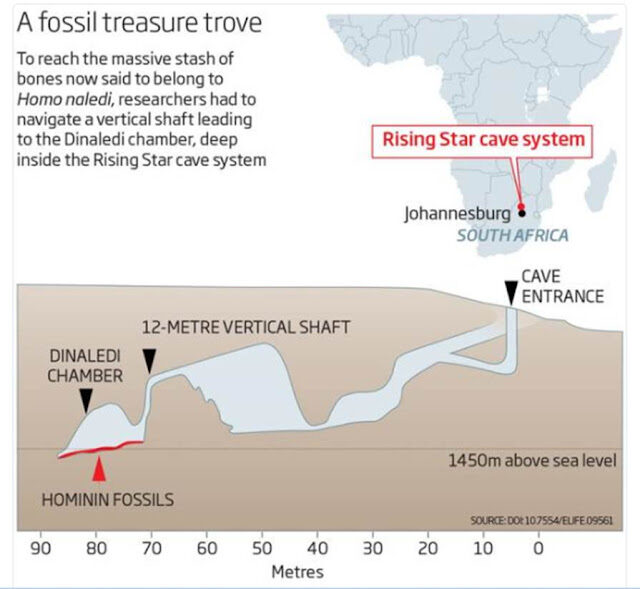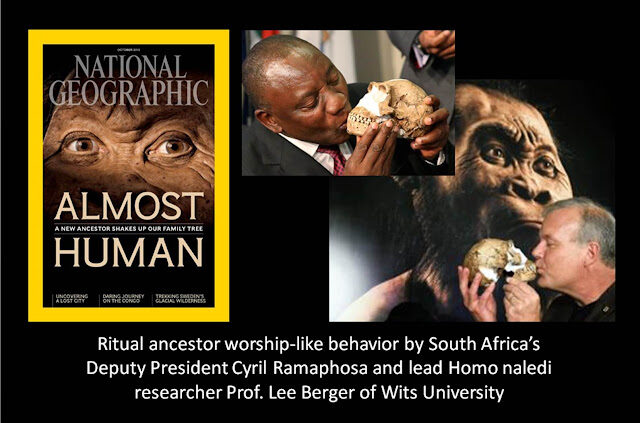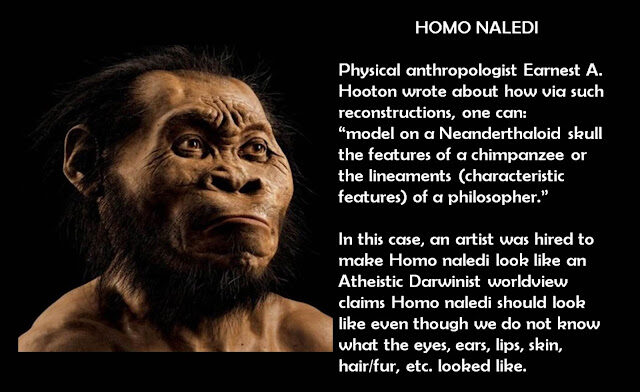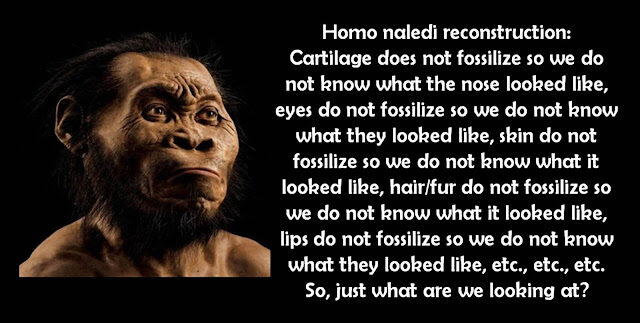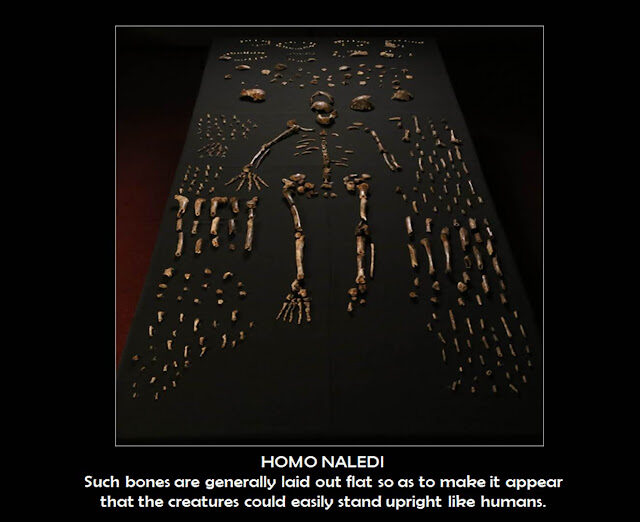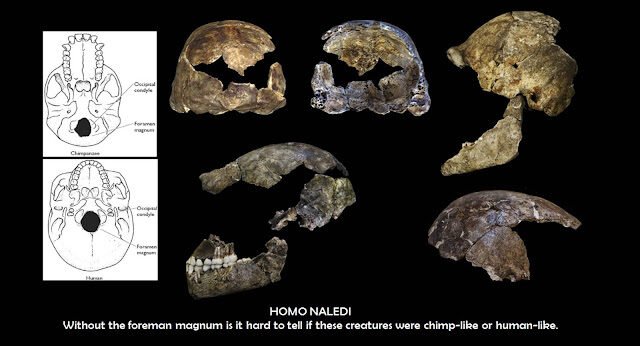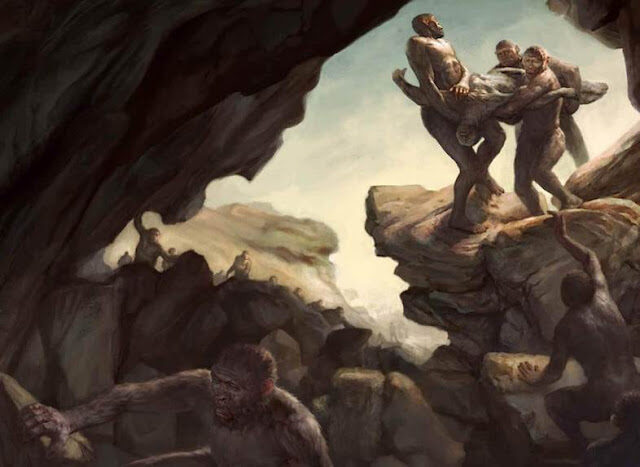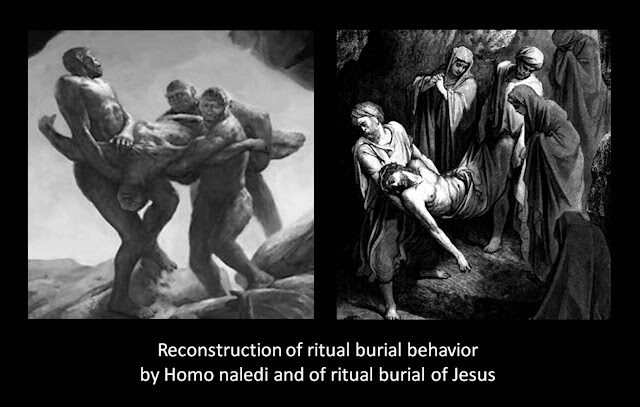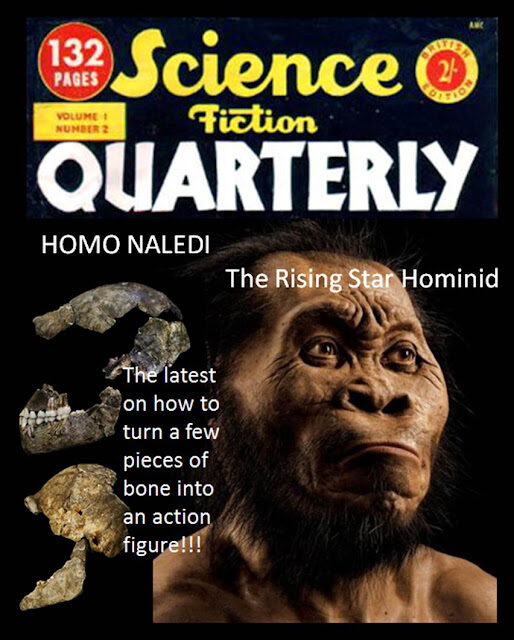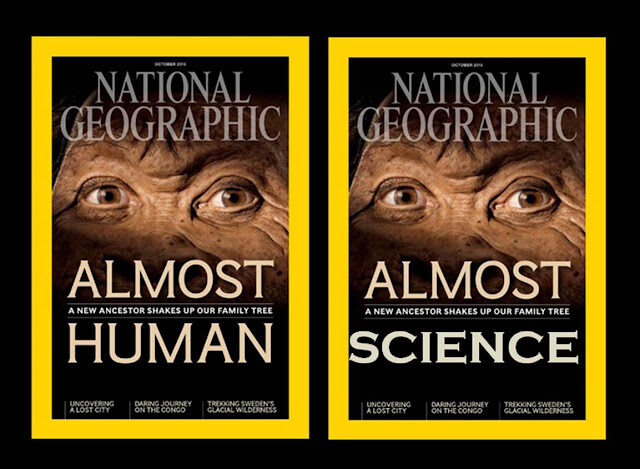Nadia Drake wrote “Mystery Lingers Over Ritual Behavior of New Human Ancestor for National Geographic (September 15, 2015 AD). It is a very typical pop-science articles and one which touches upon issues pertaining to such reporting as well as issues of the manner in which we discern intelligence in others.
Firstly, the finding of Homo naledi has provided much food for thought and I already wrote two articles: Is Homo naledi the transitional form missing link? and Evolution news – human-like species discovered, named Homo naledi.
Nadia Drake’s title references a “New Human Ancestor” which is a conclusion based on merely the very first stage of research. There is utterly nothing to make us think that Homo naledi is a human ancestor other than Darwinian evolution is a worldview philosophy and we must force fit evidence into it—or so is the modis operandi of evolutionists.
Some very small skeletons were found and so they are automatically labeled as human ancestors. The reason for references to “Ritual Behavior” is that “A newly found human ancestor may have deliberately disposed of its dead, a behavior that may not be unique to us.”
Right on target and amazingly, the article quotes William Jungers, a paleontologist at the State University of New York, Stony Brook, who told National Geographic, “Mortuary ‘rituals’ wherein pinheads regularly dispose of corpses makes a better headline than ‘we don’t yet have a clue.’”
Well, we don’t yet have a clue but Nat Geo still went with the “better” headline which not only referenced ritual behavior but that H. naledi is a new human ancestor.
Presupposing that H. naledi engaged in such ritual behavior, we will get to the presupposition in a moment, Nadia Drake wrote:
While one has to wonder why H. naledi individuals would go to such lengths to dispose of their dead, other hominins, or human ancestors, are known to have treated their dead in a ritualized way. And many animals also respond to death with a specific set of behaviors. Considering those contexts, H. naledi’s habits might not be so odd.
The issue is not oddity but actuality. The presupposition is that H. naledi engaged in ritual behavior but how so, is this not a simple fact? Well, over a dozen skeletons were found together within what is termed the “Ninaledi Chamber” portion of the “Rising Star” cave system in Johannesburg, South Africa. H. naledi were small creatures and only small humans have been able to spelunk it.
National Geographic provided no photographs of the cave nor especially, the key point, the Ninaledi Chamber but in typical Darwinian bait and switch style provided a painting depicting what Homo naledis may have looked like and how their ritual may have been carried out.
They also provided reconstructions of what ancient ritually buried skeleton look like that are not, repeat not, H. naledi related but are from Israel (“the earliest known examples of Homo sapiens sapiens”) and France (Neanderthals; who were humans suffering from rickets). Ritual burial behavior is generally concluded when the skeletons are found in a styled fetal position and/or along with objects, etc.
From what I can tell, no photos or specific descriptions of the skeletons with the Ninaledi Chamber have been released and so the ritual burial conclusion, in this case, seems to be solely based on the fact that the skeletons were found together.
Could this denote ritual burial behavior? Perhaps. Could this furthermore imply intelligence? Perhaps.
However, the issue is that Nadia Drake took it upon herself to weave a Darwinian tale and to conclude that H. naledi’s is ritual burial and not well, if not ritual burial what then?
I certainly do not know but perhaps the mass burial was the result of some sort of wash out. That is to say that perhaps the creatures were gathered together escaping a flood and were washed away together. They could have been washed into the cave, they could have ended up there via what is termed hydro sorting as well (being of the same basic shape and size they may have been sorted as they tumbled around in the water.
Or, for all we know the cave was the home of some ancient predator which regularly feasted on H. naledi (the skeletons would show signs of tooth and claw marks).
The point is that in either case, we are being told much too much about creatures about which we know very little.
However, one bit of actually provable ritual behavior can be reported as South Africa’s Deputy President Cyril Ramaphosa and also lead researcher on the project Professor Lee Berger of Wits University have been photographed kissing the reconstructed skull of H. naledi in some strange form of ancestor worship……or, something.
Now, what about the issue of creation via intelligent design? Simply stated, a bunch of skeletons found in the same location (in whatever configuration and for whatever reason) is enough for scientists, pop-science reporters and prepubescent bloggers to conclude that Homo naledi was, as the cover of National Geographic states it, “Almost Human” as they displayed some level of intelligence.
However, the very same personages have been confronted with the fact of a fine tuned universe, a virtual information system known as DNA, etc. and conclude that it is a coincidinc, a happenstance, the result of a very long series of happy accidents, time’did’it, matter’did’it, etc., etc., etc.

